I’ve always enjoyed having fun outdoors, and recently I’ve started to branch out of my usual “going for a walk in the park” comfort zone. My latest adventure took place in the wonderful state of Alabama at a location I wouldn’t have pictured myself being had you asked me a few months ago– a cave. Not just any old, regular cave that people wander into to make-out and spray-paint the walls, but a vertical cave with a super cool 100 ft drop called Sheldon’s Cave.
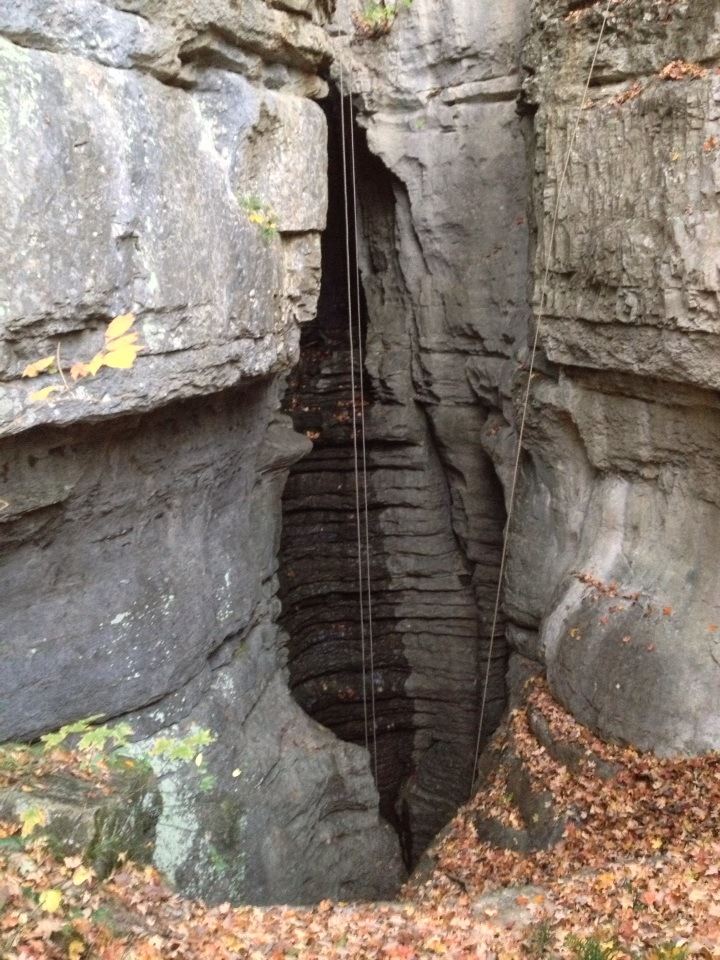
For the avid caver, or spelunker if you prefer, 100 ft may not be very exciting, but to me, I was stoked… and nervous. I had gone exploring in horizontal caves before, but had never done any descending (except for my days of rock climbing several years ago). We had some practice at a rock climbing wall, but I was still nervous for the real descent. It is a very uneasy feeling having to rely on a skinny rope to hold your weight as you ease over the edge of cliff. “Oh, just lean back and trust the rope.” Trust the rope?! But we just met! So, with my left hand in a death grip on the rappel rack and my right hand in a death grip on the loose end of the rope, I (very slowly) made my way over the edge of the cave and down the side. By the time I got about half way or so, I eased up and realized how awesome it was that I was descending below ground level, about to go exploring another cave.
You may be thinking, “What the heck is this rappel rack she is talking about?” A rappel rack (see one in action here) is a J-shaped device made out of aluminum and/or steel with bars running between the two sides of the device. The rope gets woven between each bar to create a friction force which counteracts the force of gravity and slows the descent. The speed of the descent can be adjusted by either adding or removing bars or by sliding the bars up or down. Adding bars increases the surface area in contact with the rope, increasing the amount of friction between the rope and the rappel rack, decreasing speed. Sliding the bars up increases the angle of contact between the rope and bars, once again increasing the amount of friction and decreasing speed. This idea of angle of contact is best exemplified in pulleys, where the tension (pull) of one side of the rope can be calculated using the tension of the other side of the rope and the degree of contact the rope has with the edge of the pulley (Capstan equation).
The diagram above shows the amount of contact the rope has with the rappel rack for the given configuration; areas of rope within the angles shown are places where the rope is in contact with the bars and normal (contact) force is being applied. This is how I had my rappel rack set up for the descent, and being a scaredy cat, I was definitely not about to take off any bars in order go faster. I was perfectly content with my snails pace. I could have gone even slower had I slid up the bars, but I didn’t want to look TOO much like a newb.
At a stand still, the net force on the system (me and the rope) is zero, so the amount of friction supplied by the rappel rack would be equal in magnitude to the amount of gravitational force on my body (assuming an ideal situation without any deformation of the rope). Assuming the static friction coefficient for the rope against the steel rappel rack is 0.25, the minimum amount of normal force required to counteract gravity and keep the rope from sliding can be calculated. Since I weigh about 150 pounds (68 kilograms), the amount of gravitational force on my body equals about 666 Newtons. What a lucky number! Setting this equal to the amount of friction required, the amount of normal force the rappel rack must supply against the rope is 2665.6 Newtons. Dang! That’s a lot of Newtons, seeing as one Newton is about equal to the amount of weight of one apple. That’s enough apples to make a whole lot of pie!
The rappel rack doesn’t actually supply this much normal force alone, which is why I still moved down the rope even with all of the bars on the rack. This is where my hand holding on to the rope came into play. If I ever got to going too fast, I would squeeze the rope with my right hand and would stop moving (or slow down, depending on how hard I squeezed). Just like the rappel rack, my hand supplied a normal force against the rope which created friction and counter-acted the force of gravity.
Now that I have blown your minds with my awesome tale of caving and physics, enjoy these great pictures taken by cave master (joking), Colin Lehman:

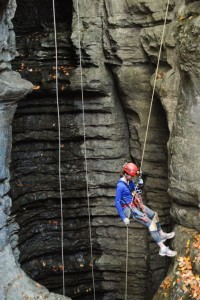
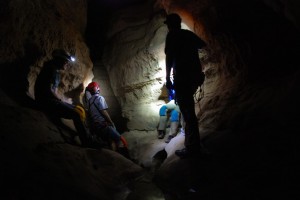
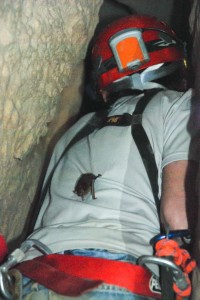

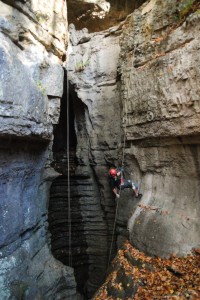
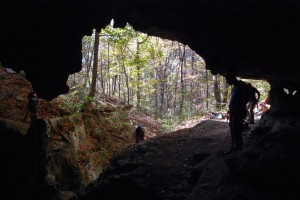

Source:
The Mechanics of Friction in Rope Rescue by Stephen Attaway, Ph.D. (Find it here)
Photos by Colin Lehman and Nima Yazdanpanah
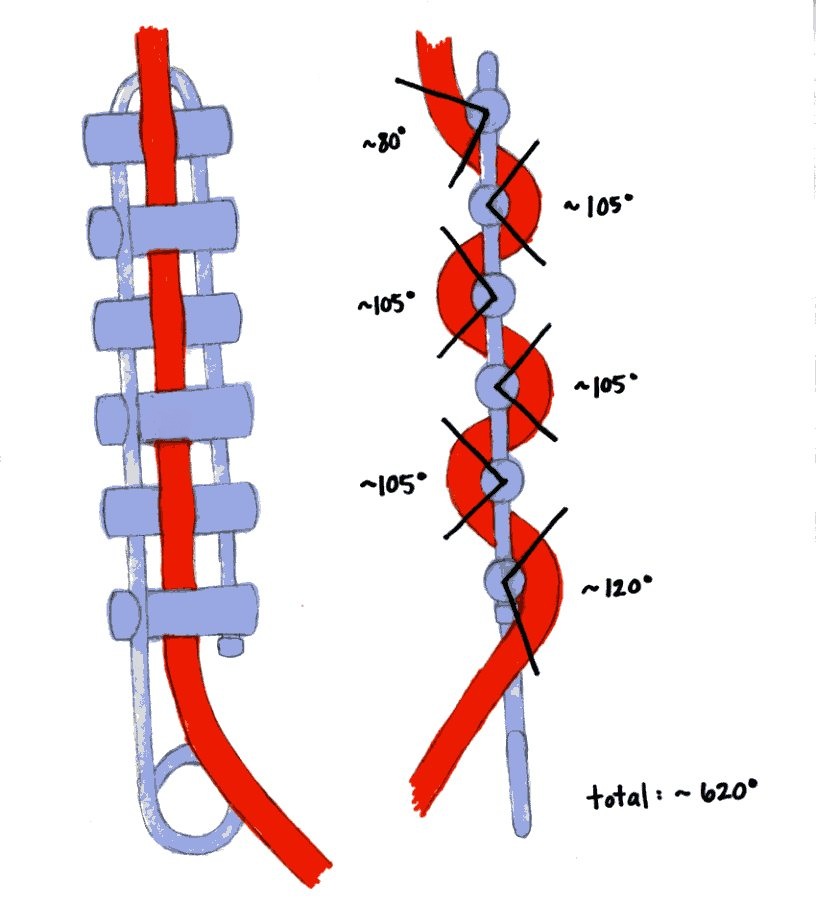
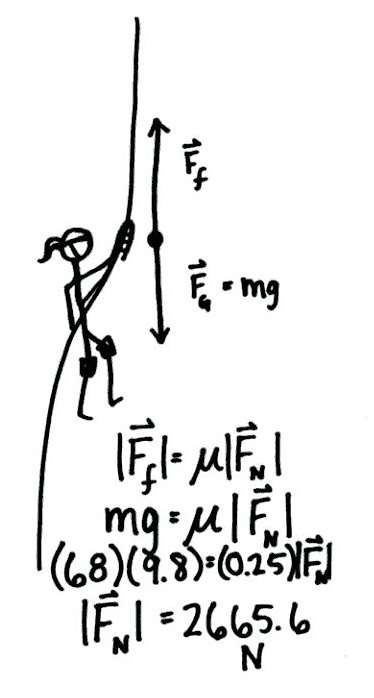
daring descent!
Nice! Vertical caving is a great topic for Wired!
Correction….Charged…it's been a long semester 🙂
[…] I went caving again this weekend! (See my article about my first vertical caving trip here.) We went to Sheldons again, but this time I went down the longer rope (~100 ft drop), so I was […]